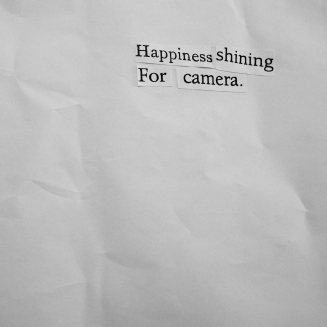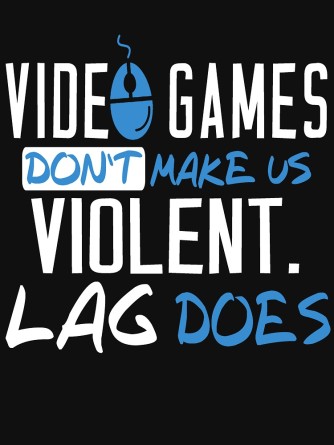I’m on overtime again. Been postponing due to lack of creativity. Trying to mine the information gathered last week. We talked about morality in games, and we attended the installation Textransformations by our professor Mia Zamora. Which I did enjoy, but my views on installations are often binary – I either like it or not. I often find myself trapped in the realm of traditional art.
The installation opened for collaboration with the viewers. A container of words and glue gave us all we needed to compile poems. I wouldn’t call myself a ‘lyrical word-smith’, but I found some words that gave meaning to me – happiness, shining, for, camera. Which is ironic, since I prefer taking melancholic portraits. I do however feel happiness when I capture something beautiful, and hopefully the recipients feel the same.

Feelings are in a way the keyword for last week. When talking about games, and art in general, is it possible to produce an empathic reaction? I do think so, but it’s not always an easy task to accomplish, because human emotions are tricky.
We played some micro games based on morality in class. I chose the game Bad News, a text-based game with some graphical elements, were the goal is to make you an expert in spreading fake information. The game emphasizing how people exploit human emotion to polarize society, to push us towards tribalism. Anger, and the related feelings, are easy to manipulate, and I often quote one of my favorite characters from the Star Wars saga, Yoda: “Fear is the path to the dark side. Fear leads to anger. Anger leads to hate. Hate leads to suffering.”
Morality is no easy subject. Philosophers have tried for centuries to find a decent theory to explain it, and the area of ontology and epistemology is rough. I’m glad that Norway still require students to go through Examen philosophicum and Examen facultatum, even though lots of students find the course to be tedious. I believe that a basic understanding of philosophy is necessary in our society – and that it will be more than ever useful in the future. One thing that I learned last semester is that there is no perfect theory within the humanities, but by learning about the existing ones, we can use them for understanding, if applicable to the situation.
Bringing this back to video games; I do believe that one can construct artwork that can make other people feel something – either empathy, sympathy or compassion. I’m not going to wander into the steep canyon of morality as an objective phenomenon, but I guess that there are people out there able to produce art as in video games with an empathic core without deep theoretical knowledge. I do however think that combining theory and some understanding of human perception will benefit a developer. More on this topic in the next post.
In other news; I want to mention some games, people and content from a classic. Beginning with the new game A Way Out, which is an action-adventure game, developed to be played with another person in a split-screen configuration. I’ve not played it myself, but I’ve watched a full walkthrough by one of my favorite gamers, jackfrags, and a friend of his – almost 5 hours. Story aside, I was really intrigued by the game mechanics and how the developers use several aspects of game theory to experience – even jumping over to a 2D perspective with horizontal scrolling. The game also includes a homage to the earlier types of games – like Four Across and early arcade fully playable in-game. You can also pick up a banjo and play some tunes with the same mechanic as Guitar Hero.
Earlier in this course, we talked about digital art and the difficulties in preserving it for the future. Technology required to view certain pieces become obsolete and emulators are not always a perfect solution. I stumbled upon an interview from VICE with a man dedicated to preserving gaming history.
He decided to as much of the history as possible – from the games themselves to packaging to literature and other aspects of relevant culture. “What I’ve come to understand, is that the game itself is only part of the story, you can play Super Mario Brothers, if you play it now, it’s a good game. That game if you examine within its context was a revolutionary game.” (Frank Cifaldi)
Lastly, a gem from the content box. The GTA franchise has been praised and loathed since its inception 1997, but one aspect of it is amazing – the radio channels. I’ve spent so many hours just driving around the cities just listening to the radio – music, commercials and talk shows, tailored to the game. My favorite is from GTA III and is a purely talk show channel called Chatterbox FM. Filled with satire and humor.

 Aristotle used the term ‘catharsis’ for the act of purging emotions and relieving emotional tensions, and it’s believed that playing video games can help people in just that. However, like any theory, there are arguments against it. So I can only speak from my own experiences at the moment.
Aristotle used the term ‘catharsis’ for the act of purging emotions and relieving emotional tensions, and it’s believed that playing video games can help people in just that. However, like any theory, there are arguments against it. So I can only speak from my own experiences at the moment.